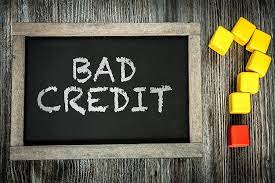Home Mortgage Loans
In the ever-evolving landscape of real estate, the dream of owning a home remains a timeless aspiration for many. As prospective homeowners navigate the intricate web of options available, one crucial aspect stands out – home mortgage loans. This comprehensive guide aims to unravel the intricacies of home mortgage loans, providing valuable insights to empower you on your journey to homeownership.
Section 1: Understanding Home Mortgage Loans
Subsection 1.1: What is a Home Mortgage Loan?
A home mortgage loan is a financial arrangement where a borrower secures funds from a lender to purchase a property. This transaction involves an agreement to repay the borrowed amount, plus interest, over an agreed-upon period.
Subsection 1.2: Types of Home Mortgage Loans
a. Fixed-Rate Mortgages: Offers a stable interest rate throughout the loan term, providing predictability in monthly payments. b. Adjustable-Rate Mortgages (ARM): Features an interest rate that may fluctuate based on market conditions, potentially leading to variations in monthly payments. c. FHA Loans: Insured by the Federal Housing Administration, these loans often have more lenient qualification requirements, making them accessible to a broader range of homebuyers. d. VA Loans: Reserved for eligible veterans and military service members, VA loans provide favorable terms and often require no down payment.
Section 2: Qualifying for a Home Mortgage Loan
Subsection 2.1: Credit Score and Credit History
Understanding the role of credit scores and maintaining a healthy credit history are crucial steps in the mortgage application process. Lenders often use these factors to assess a borrower’s creditworthiness.
Subsection 2.2: Debt-to-Income Ratio
Lenders evaluate a borrower’s debt-to-income ratio to gauge their ability to manage additional debt. Calculating this ratio involves comparing monthly debt payments to gross monthly income.
Section 3: The Mortgage Application Process
Subsection 3.1: Pre-Approval vs. Pre-Qualification
Distinguishing between pre-approval and pre-qualification is vital. Pre-qualification provides an estimate of the loan amount you may qualify for, while pre-approval is a more rigorous process involving a comprehensive financial review.
Subsection 3.2: Required Documentation
To streamline the mortgage application process, borrowers should be prepared with essential documentation, including proof of income, employment verification, and details about assets and debts.
Section 4: Understanding Mortgage Rates
Subsection 4.1: Factors Influencing Mortgage Rates
Explore the various factors that impact mortgage rates, such as economic indicators, inflation, and the overall health of the housing market.
Subsection 4.2: Rate Locks
Understanding the concept of rate locks empowers borrowers to secure a favorable interest rate, protecting them from market fluctuations during the loan approval process.
Section 5: Closing the Deal
Subsection 5.1: Closing Costs
Delve into the realm of closing costs, encompassing fees for services like appraisal, title search, and legal documentation. Understanding these costs ensures financial preparedness for the final stages of the homebuying process.
Subsection 5.2: The Role of Escrow
Explore the role of escrow accounts, which hold funds for property taxes and insurance, ensuring a seamless flow of payments and peace of mind for both the borrower and lender.
Conclusion:
Embarking on the journey to homeownership through a home mortgage loan involves navigating a labyrinth of information. Armed with an understanding of the types of loans, qualification criteria, and the application process, you can confidently stride towards your dream home. Remember, a well-informed borrower is a empowered borrower.


